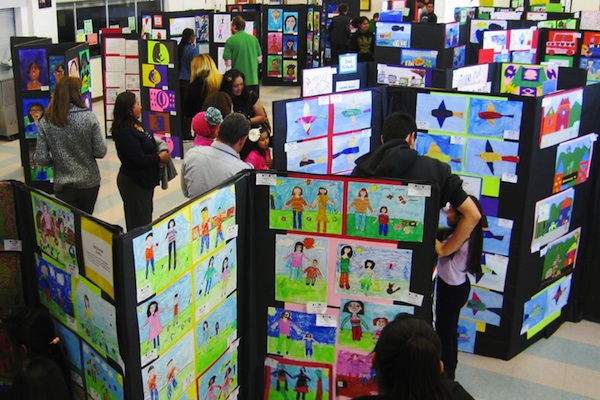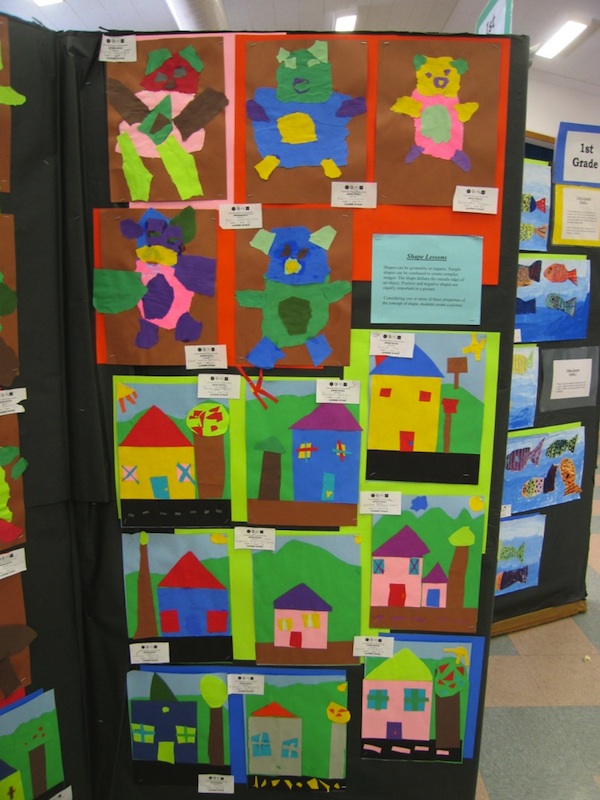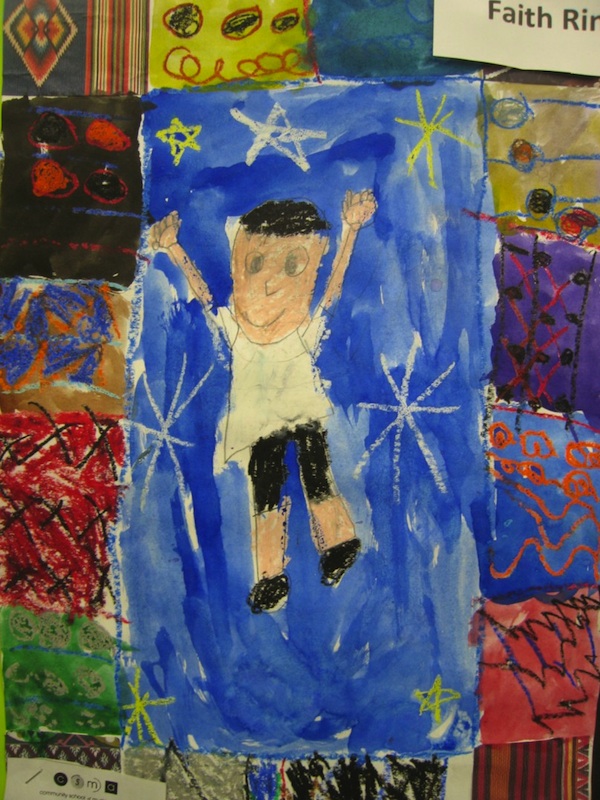
Learning through the language of art at Lyndale Elementary School
By Evy Schiffman, Community School of Music and Arts (CSMA)
As the children watch the painter creating the mural at their school, they are eager to provide helpful suggestions and critical commentary. “I don’t think that the apple should be green,” says one boy. “The green will blend in too much. You need a color with more contrast.” The muralist agrees, as does Lyndale School Principal Gretchen Dietrich-Wynne, who has a big smile on her face as she listens to the children’s articulate use of words learned in art class.
For Principal Dietrich-Wynne expanding vocabulary and having children apply their learning in conversation are only two of the many benefits that she attributes to the Art4Schools program of the non-profit Community School of Music and Arts (CSMA) at Lyndale School, part of the Alum Rock Union Elementary School District serving low-income families in East San Jose, CA.
With more than 80% of Lyndale students English Language Learners (ELL), the weekly art lessons not only provide language development through discussions, but all students develop vocabulary through the use of new art-related words and the constant use of positional words, which are difficult for ELL to master. “It is amazing to hear our students in grades K-5 speak so freely and comfortably with the vocabulary acquired in their art lessons,” says Dietrich-Wynne.
In a letter to Linda Covello, CSMA Art School Director, the principal described the “overflow of learning” that the students carry with them from their art classes into all subjects. Many teachers create meaningful science, social studies and reading activities for their students by integrating skills and techniques used by CSMA art instructors in their classes.

While math skills are enhanced through lessons on patterning, geometric shaping and spatial orientation, students’ fine motor development and eye-hand coordination develop resulting in improved penmanship and letter formation.
Lyndale teachers also report that students’ narrative and expository writing skills improve, noting that when children write soon after Art4Schools lessons and discussions, their “work displays a more developed and descriptive sentence structure.” Students also have a chance to share their learning with family and friends. At an end-of-the-year exhibition, the children enthusiastically discuss their art, taking great pride in showing what they have accomplished.
An added benefit of art at the school is the ease with which projects can continue beyond the classroom. “Since all art lessons involve simple materials,” says Dietrich-Wynne, “students are able to recreate or adapt the activities at home.”
In a third-grade district-wide writing test, when Lyndale students were given a prompt to write about what makes their school special, art was a big part of their essays. Of course, this was no surprise to Principal Dietrich-Wynne who says, “The art program has helped to transform our school’s character, creating a new energy and enthusiasm for student success and unlimited possibilities for everyone.”

Recent Content
-
Artsarticle ·
-
Artsarticle ·
-
Artsarticle ·
